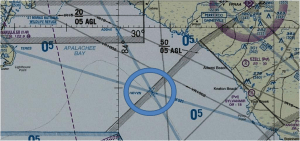![By Huhu Uet (Own work) [CC BY-SA 3.0 (http://creativecommons.org/licenses/by-sa/3.0)], via Wikimedia Commons](https://i2.wp.com/johnclarkeonline.com/wp-content/uploads/2016/04/Uetersen_Unwetter_09-08-2009-11-300x199.jpg?resize=300%2C199)
Homerville, Georgia is the home of some first-rate southern barbeque and home of one of the best genealogical libraries in the Southeast, the Huxford Geneological library. In June of 1975 I made an unintended stop at the Homerville Airport after flying my 1962 Cessna 150 from Thomasville, Georgia to Waycross, Georgia. My wife and Mother-In-Law were in Waycross, visiting, and on a Friday afternoon I took off in my 2-seater aircraft to meet my wife’s family 92 miles away.
As I approached Waycross a thunderstorm was directly on top of the field. The Waycross Fixed Base Operator confirmed they were being clobbered, so I made a 180 degree turn and flew 26 miles back to the Homerville airport that I had passed on the way in.
When I landed I found I was the only aircraft, and only human, on the field. But regrettably, there were no tie-downs, ropes or chains that I could use to secure the little Cessna while I found a phone to call my wife and tell her about the change in plans. The weather was good, and it should take only a few minutes to bother one of the nearby neighbors for a phone call. What could go wrong?
After I explained to my family where I was, I thanked the friendly lady who let me use her phone, and headed back to my aircraft. But as I approached the plane, the view at the other end of the runway was turning ugly. Another thunderstorm was headed straight for the field. And it was close, and mean-looking.
I climbed into the cockpit, started the engine, and sat there assessing what I was seeing out the windscreen. And thinking about options.
What I wanted to do was take-off and head for Waycross. I was not at all prepared to abandon my airplane and watch it be destroyed by the approaching storm. As I considered the fact that I would be taking off towards a thunderstorm, I thought of riding out the gusts on the ground, using the engine power and rudder to keep the plane pointed into the wind. But as I throttled the engine and rudder back and forth, reacting to the increasing gusts, I realized the 1000 pound plane would inevitably be picked up, with me in it, and dashed to the ground. It would not be a pretty sight, especially if it was lifted to a significant height by updrafts before being dropped.
The wind ahead of the thunderstorm rain shaft was picking up, gusting, and as I weighed the different options, the storm kept getting closer, closing my window of opportunity. As they say, the clock was ticking.
Finally, I decided I’d rather be airborne, in some semblance of control, than being airborne out of control. The storm was not yet on the field, but I knew I had scant seconds before the cloudy violence would make an escape impossible. I pressed hard on the brakes, dropped my flaps one notch, pushed the throttle full in, and when the engine was roaring as loudly as a 100 horse power engine can roar, I let go of the brakes and started my takeoff roll.
Thanks to the advantage of straight-down-the-runway storm winds, I lifted off very quickly. I stomped a rudder pedal and dipped a wing to turn as fast as I could away from the storm, passing over the roofs of nearby houses much closer than the residents were used to, I’m sure. But the plane was fully in control and headed quickly towards safety.
Although the storm winds were actually helping to push me away, I felt an occasional shudder from the back of the plane. I imagined the storm shaking me in its jowls, plucking at my wings with its sharp talons, as if angry that I had escaped its clutches.
I made it safely to Waycross, but my aircraft’s escape was short-lived.
If there were such a thing as a Storm Monster, I would think that it was malevolent, because exactly two weeks after that incident another thunderstorm hit the field in Waycross, where the plane was supposedly safely chained down. I was on the field as a vengeful storm snapped the steel chains holding down my plane’s tail, flipping the plane over on its back, crushing the tail. My little bird never had a chance.
I had risked my life in Homerville to avoid watching my beautiful bird be destroyed, only to see it destroyed in the same manner only a fortnight later.
We tell our children there are no monsters … but I’m not so sure.


















